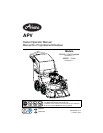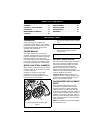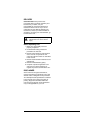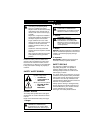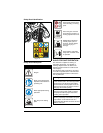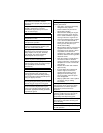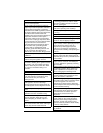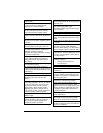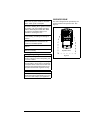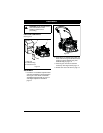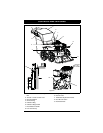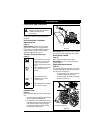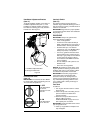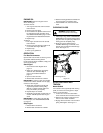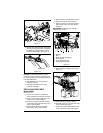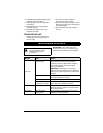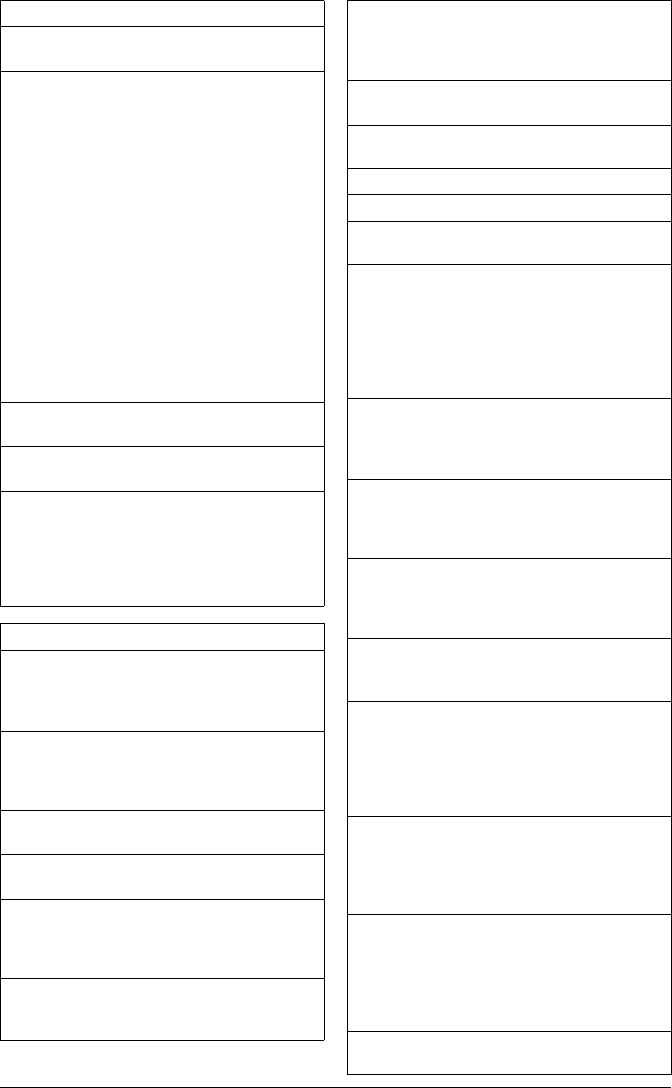
EN - 7
Do not mix oil with gasoline.
Do not overfill. Allow about 1/2" of tank
space for fuel expansion.
Do not overfill! This equipment and/or its
engine may include evaporative emissions
control system components, required to
meet EPA and/or CARB regulations, that will
only function properly when the fuel tank has
been filled to the recommended level.
Overfilling may cause permanent damage to
evaporative emissions control system
components. Filling to the recommended
level ensures a vapor gap required to allow
for fuel expansion. Pay close attention while
filling the fuel tank to ensure that the
recommended fuel level inside the tank is
not exceeded. Use a portable gasoline
container with an appropriately sized
dispensing spout when filling the tank. Do
not use a funnel or other device that
obstructs the view of the tank filling process.
Replace fuel cap securely and clean up
spilled fuel.
Never fill fuel tank indoors. Always drain fuel
outdoors away from ignition sources.
Never store the machine with fuel in the fuel
tank inside a building where ignition sources
are present, such as hot water and space
heaters, clothes dryers and the like. Allow
the engine to cool before storing in an
enclosure.
Operation
Start the engine (motor) carefully according
to the manufacturer’s instructions. Keep
hands and feet away from inlet and
discharge areas.
Do not put hands or feet near or under
rotating parts or at inlet or discharge
openings. Moving and/or rotating parts can
cut off body parts, such as fingers or a hand.
Always keep hands away from all pinch
points.
Keep children and pets away. Never allow
bystanders near the unit while running.
Do not touch machine parts which might be
hot from operation. Allow parts to cool
before attempting to maintain, adjust or
service.
Check for weak spots on docks, ramps or
floors. Avoid uneven work areas and rough
terrain. Stay alert for hidden hazards.
Exercise extreme caution when operating on
or crossing gravel drives, walks or roads.
Stay alert for hidden hazards or traffic. Do
not carry passengers.
Remove hearing protection and watch for
traffic when operating near roadways.
Never pick up or carry machine while engine
is running.
Walk; never run.
Exercise caution to avoid slipping or falling.
Never operate the machine at high transport
speeds on hard or slippery surfaces.
After striking a foreign object, stop the
engine (motor), remove spark plug wire and
wait for all moving parts to come to a
complete stop. Thoroughly inspect the
machine for any damage and repair the
damage before restarting and operating the
machine.
If machine jams or hose becomes clogged,
stop the engine and allow moving parts to
completely stop. Use only a wooden stick to
remove debris.
If the machine vibrates abnormally, stop
engine (motor) and check immediately for
the cause. Vibration is generally a warning
sign of trouble.
Stop the engine (motor) whenever you leave
the operating position, when making any
repairs, adjustments or inspections, and
before unclogging the discharge chute.
Take all possible precautions as
recommended by the manufacturer when
leaving the machine unattended.
Before cleaning, repairing or inspecting,
shut off the engine (motor) and make certain
that all moving parts have come to a
complete stop. Disconnect the spark plug
wire and keep the wire away from the plug to
prevent accidental starting.
Do not operate the engine (motor) in a
confined space where dangerous carbon
monoxide fumes can collect. Open the
outside doors; exhaust fumes are
dangerous.
Never operate machine without proper
guards, plates or other safety protective
devices in place. Always keep protective
structures, guards, and panels in good
repair and securely fastened. Never modify
or remove safety devices.
Do not operate machine without collection
bag attached.



